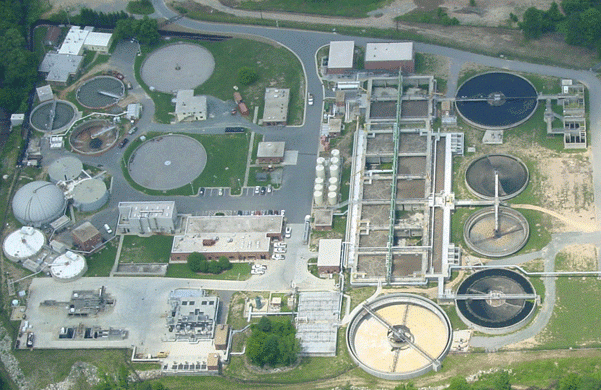Hazen Launches Groundbreaking Study of Water Quality in Quarry Lakes
More utilities are turning to quarry and gravel pit lakes as alternative water supplies. What do they need to know?
In 2009, Denver Water began operating two reservoirs built in reclaimed gravel pits—the first of nine such pits it’s repurposing for water storage. They will collectively be able to hold approximately 30,000 acre-feet (nearly 10 billion gallons) once complete, allowing the utility to reuse and conserve more of its tightly managed water supplies.
The utility knew the unique setup of the reservoirs could pose water quality challenges. The pits are shallow, ranging from 30 to 60 feet deep, and their source water, the South Platte River, receives effluent (treated wastewater), which sometimes makes up the bulk of the river’s volume.
What was surprising to Denver Water’s Ryan Walsh was how quickly the water quality began to impact the infrastructure. Shortly after coming online, the reservoirs began showing signs of corrosion—particularly during summer months.
“That’s the time of the year when the water just bakes,” said Walsh, who directs the utility’s water treatment engineering division. “If you can imagine an electrical conduit starting to get pits in it and concrete beginning to deteriorate, that’s the kind of impact we started to see.”
Denver Water quickly installed diffusers to pump air into the bottom of each reservoir, which got the corrosion under control. But that initial hurdle reflects a broader one. As climate change and population growth strain water supplies across the U.S., utilities are increasingly turning to alternative water supplies and storage options—including former gravel pits and quarry lakes.
“The problem,” said Josh Weiss, who directs Hazen’s Water Resources Innovations team, “is that there isn’t a lot of great information about how water quality in these systems develops, how it’s different from what you see in other lakes, and what kinds of challenges utilities might face if they want to consider this as an option.”
Weiss is now managing a Water Research Foundation project to assess what information is available to answer those questions—and what gaps remain. A team of Hazen engineers will collect and review existing academic research on the subject, use machine learning to analyze national water quality data, and gather additional data and information from seven utilities supporting the project. Denver Water is one of them.
“We’re interested in understanding what information is out there that we don’t know and whether we can use it,” said Denver Water’s Ryan Stitt, who directs the Downstream Reservoir Program, as the gravel pit reclamation project is called. “We continue to look for ways to do things better, and this project presented a really good opportunity for that.”

(Top) North Carolina's Blue Stone Dive Resort uses a lake in a former slate quarry for scuba diving. (Above) Dunes Reservoir began operating just north of Denver, Colorado, in 2018. It's one of nine former gravel pits Denver Water is converting to valuable reservoirs. Photo courtesy of Denver Water.
The participating utilities represent not just arid states like California and Colorado, but also North Carolina, Ohio, and Virginia: places that tend to have more rainfall than they can store. Historically, said Weiss, the lack of storage hasn’t been a problem.
“But now, with climate change, there’s a higher risk of extreme water quality events—intense droughts, storms, floods,” he said. “That can tax existing sources of water.”
Population growth is also putting pressure on rivers and reservoirs in many parts of the country. Dams, and the reservoirs they can create, used to be the go-to answer for shoring up water reserves. But they’ve fallen out of fashion due to their significant costs and potential environmental impacts.
In contrast, there are tens of thousands of inactive mines in the U.S., including quarries and gravel pits. Many sit empty. Turning them into water reserves seems like a smart way to maximize resources, said Hazen’s Susheera Pochiraju, a drinking water and reuse engineer co-leading the project.
“You’re repurposing that land, avoiding a new reservoir, and helping a utility expand its water portfolio,” Pochiraju said. “But what happens if you let the water sit in a quarry lake too long? Or what kind of strategy would you need to use to manage the water quality?”
The answers aren’t well understood yet. But they could be important, given how physically distinct gravel pit and quarry lakes can sometimes look compared to other lakes and reservoirs. Gravel pits can be very shallow, while quarries can extend hundreds of feet below ground. Both tend to be isolated from rivers and other water systems.
“Some of them are lined,” said Hazen Principal Engineer Billy Raseman, another project co-leader who specializes in data science. “That’s almost like putting an in-ground pool in your yard. There’s no way for groundwater to flow freely into or out of it, which has big implications for water quality.”
Raseman is one of two engineers on the team who will use data analytics and machine learning to explore several national databases on lake characteristics and water quality data. The goal is to get a sense of what types of data could be most useful for monitoring and predicting water quality in quarry and gravel pit lakes, as well as understanding big-picture differences between these former mines and natural or manmade lakes.

“We might have 30 different things that influence a lake’s water quality,” Raseman said. “But which variables or combinations of variables make the biggest difference? Which of these are the story and which of them are noise?”
The team will also organize multiple workshops to share the team’s findings, collect additional feedback and questions, and connect utilities interested in the research.
“We see this project as a first step,” Weiss said. “We’re not going to answer all the questions we want to with this project. But I see it as a way to build a sort of user group that can continue to communicate as we get further data and insights.”

































